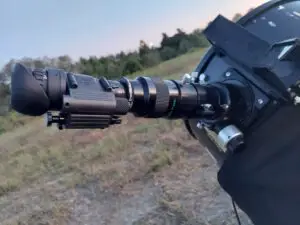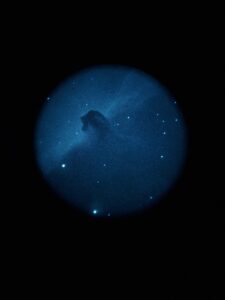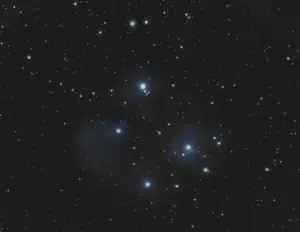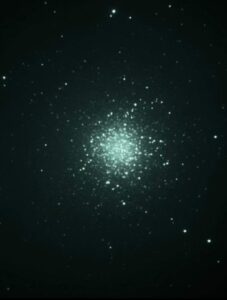Telescopes are meant to be used outside, they are pretty hardy against the elements.
The optical tube, base, mirrors and lenses are not damaged by being wet for a short period of time. However, any electrical or wood components should be strictly kept dry to avoid damage that may not be able to be repaired. Dry all components of your telescope as soon as possible.
Many astronomers keep their telescopes in outdoor sheds, observatories or on mounted piers, so they can be stored outside in the right conditions.
There are two reasons that your telescope might have gotten wet, dew or rain. This article will tell you how to deal with these situations.
If your telescope fell off a boat, got caught in a water gun fight or was damaged by a flood there are some tips at the end of the article.
My Telescope Is Covered In Dew
When you bring your telescope outside from storage it may collect condensation or dew. This happens for the same reason your cup gets covered in condensation on a hot day.
The difference in temperature from your drink and the air causes water from the air to attach to the cup.

This is normal and you do not need to wipe it off the outside of your telescope. It will evaporate while your telescope acclimates to the ambient temperature. You can read more about this process in the linked article.
When you bring your telescope inside from a night of observing, be sure to let the telescope acclimate again. Unzip your cases and check the mirrors or lenses to be sure they dry completely.
I Left My Telescope Out In the Rain
Telescopes can be stored outside, but they should be stored in a weatherproof location like a shed or observatory.
If your telescope is left in the rain you should get it out of the rain as soon as possible and allow it to dry. Bring the telescope inside the garage, shed or house and wipe down the outside and any electronic components, but do not power anything. Look inside your telescope to see if there is any water pooling on the mirrors or lenses. Move the telescope to dump off any water, but do not wipe the mirror or lenses with anything directly.
These surfaces have special coatings that can be damaged with improper cleaning. The safest thing for these surfaces is to allow them to dry undisturbed.
When the telescope has had about 24 hours to dry you can check the electronics if you think they are completely dry.
You may want to wait longer as turning on anything electrical while it is still wet can cause further damage.
Next time you set up your telescope be sure to check the smoothness of the mount. It is unlikely that the rain carried any dirt or grit into the joints, but inspect them carefully to be sure.
Rain is not a death sentence for a telescope, they are pretty hardy against the weather, it is unlikely that rain permanently damaged your telescope.
Electrical or wooden components may have been damaged and should be inspected before use.
Once the rain has evaporated off your lenses and mirrors check to see if they need to be cleaned. If you choose to clean the mirrors there are several safe ways to do so. There are three methods we recommend in the linked article.
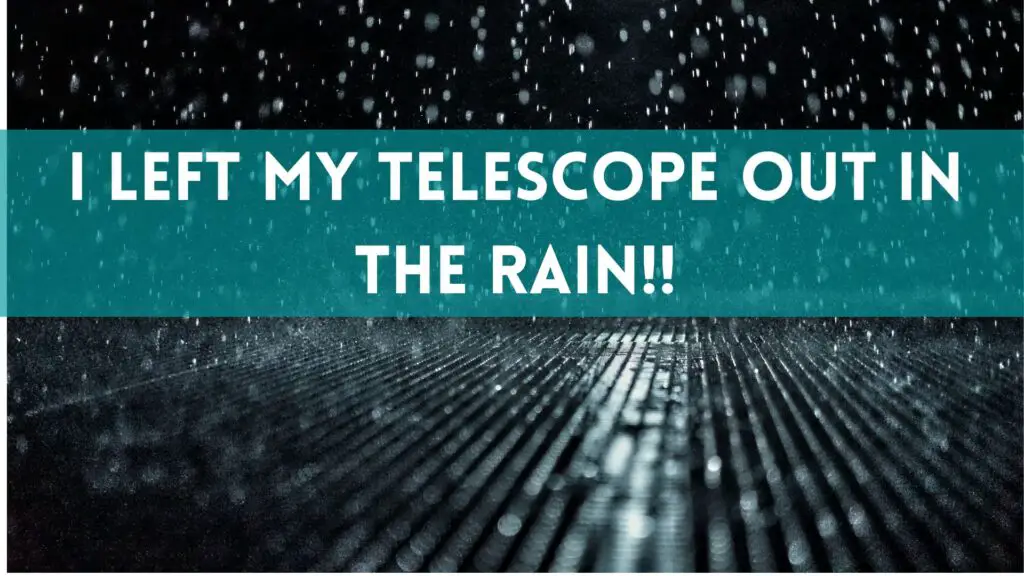
My Telescope Was Damaged in a Flood or Submerged in Water
In the unlikely event that your telescope was completely submerged in dirty water you will have to follow very different steps.
Rain water is generally clean and will not deposit dirt and grit onto mirrors and into gears, a flood however will leave the telescope very dirty.
Start by cleaning the outside of the telescope and allowing it to dry completely.
Rinse the mirrors or lenses with water and take the telescope out to observe. Perform a star test to see how the telescope is performing.
If you are noticing that the movement of the telescope is still smooth, but your views are dimmed you can have the mirrors recoated.
Recoating mirrors is relatively inexpensive and gives your telescope a fresh start.
It is possible that your homeowners or renters insurance will cover the cost of a new telescope so give them a call.
How To Get Moisture Out Of Your Telescope
Most of the time when you use your telescope you will notice that water droplets form on the outside of the telescope. This is called dew and it is completely normal.
A few times I have found that my telescope mirrors are still wet after 24 hours or more from dew.
Turn on the cooling fans to speed up the drying process.
Be sure to leave any cases unzipped so that the moisture can evaporate, but do not wipe the mirrors with anything.
If your telescope has been stored in a humid environment you may notice water has penetrated any wooden components.
Bring them inside and allow them to completely dry for at least 24 hours to determine if they have lost their strength or integrity.
Many Dobsonian telescope bases are made of composite plywood or particle board laminated with plastic. These have a shorter lifespan because of the construction.
I would recommend that you store these types of bases in a dry environment to prolong their useful life.
Can I use my telescope in the rain?
When it is raining, it is also cloudy making observing impossible.
Be sure to check your favorite weather app before observing to be sure that the night will be clear and dry.
There was one night when I was out observing and it began to rain. There were not many clouds yet and I was caught by surprise.
The first thing I did was to move my telescope to a horizontal position to keep rain from entering the optical tube, then I started capping all the eyepieces and packing them up.
There was no damage to my telescope or eyepieces.
I had checked the weather and this short burst of rain was not in the forecast.

